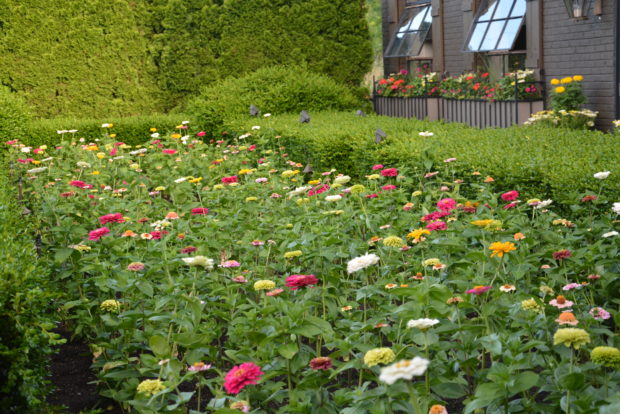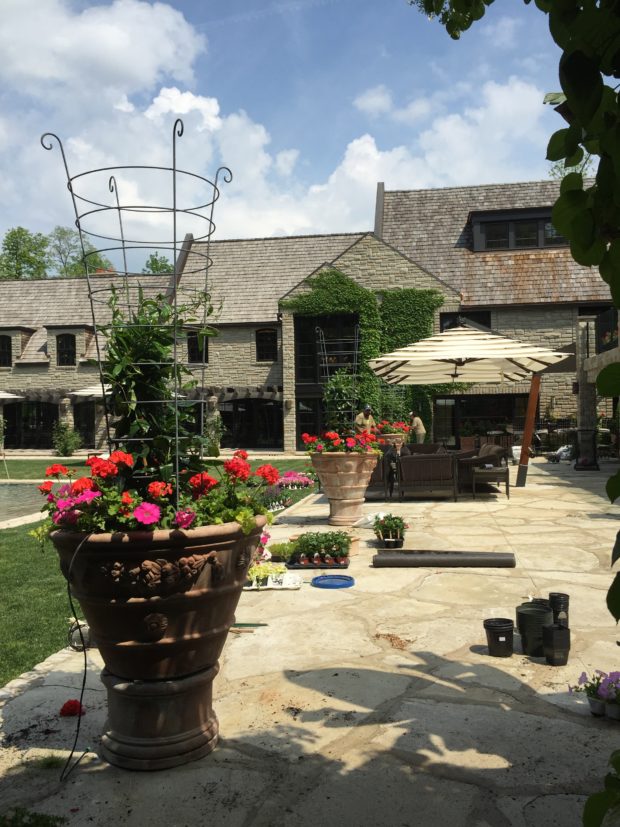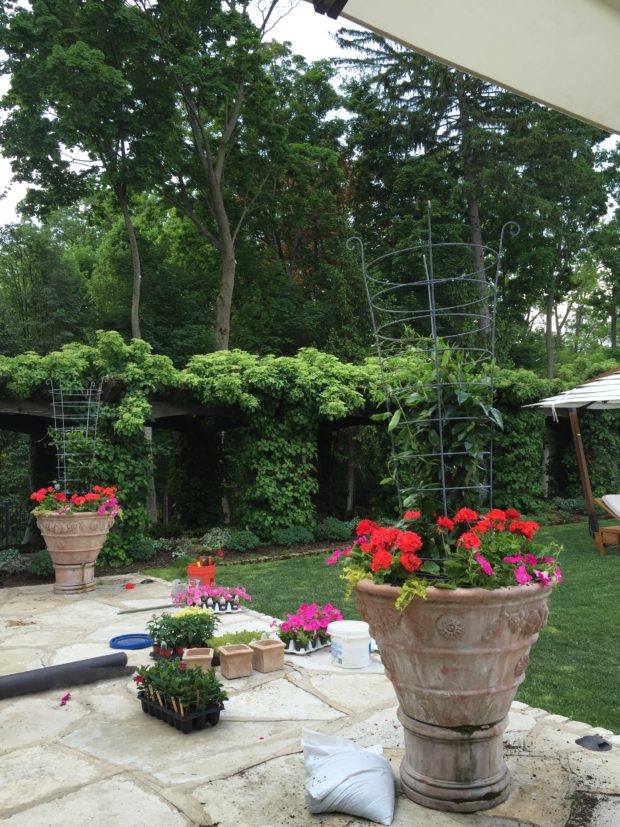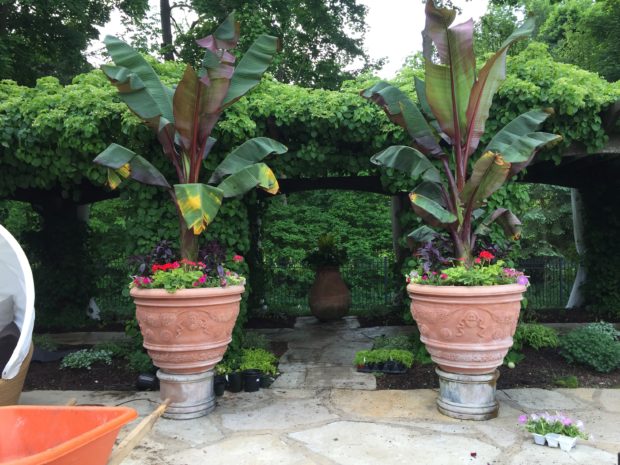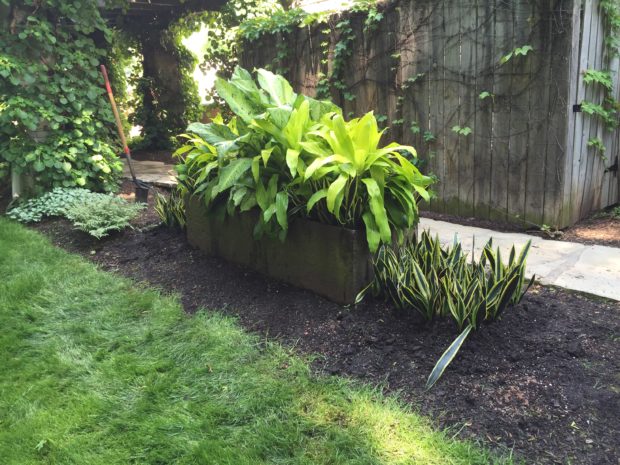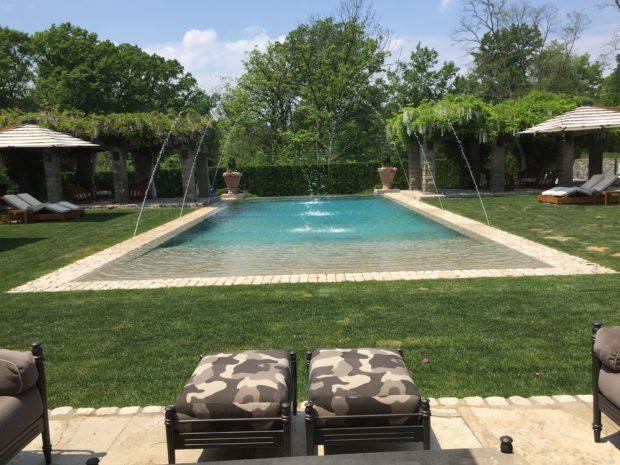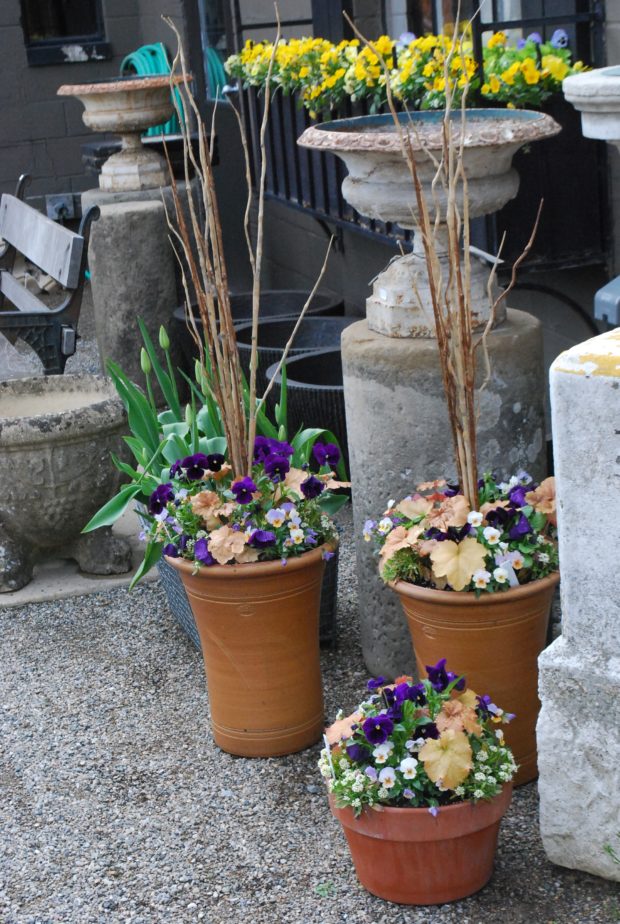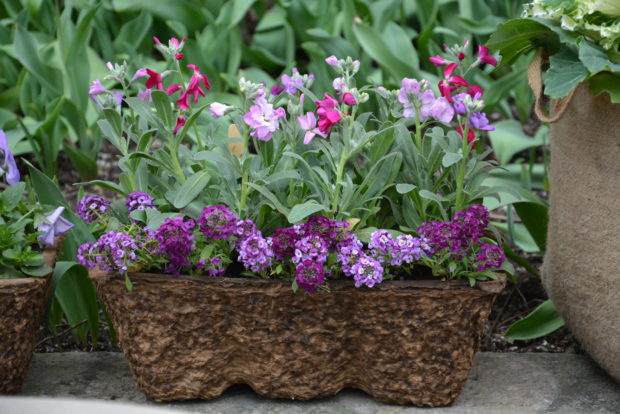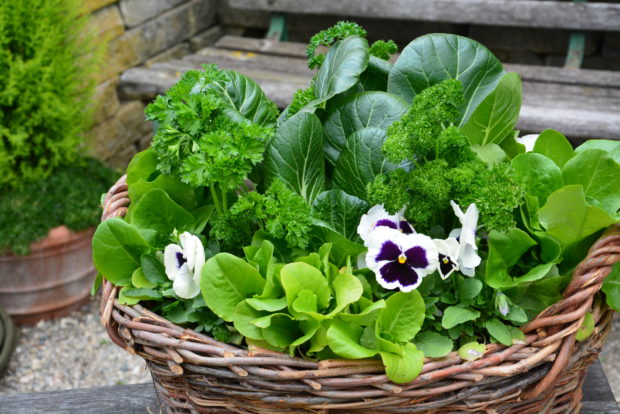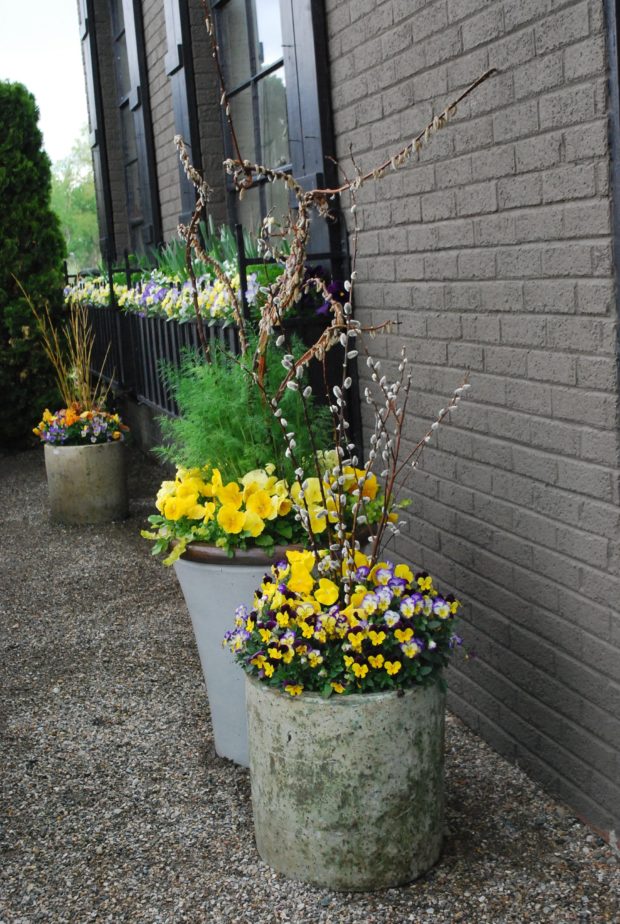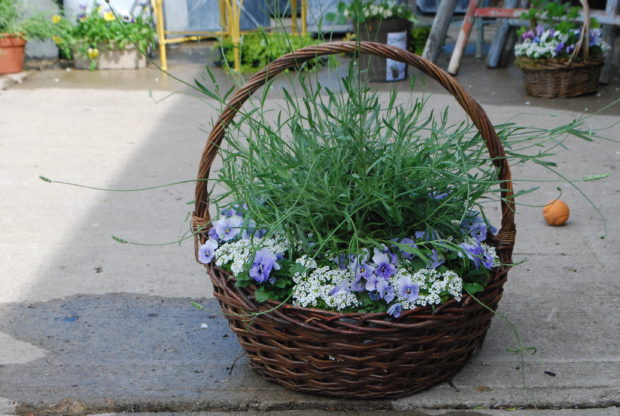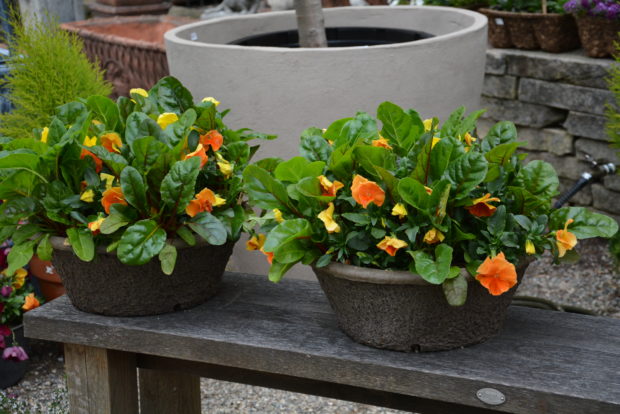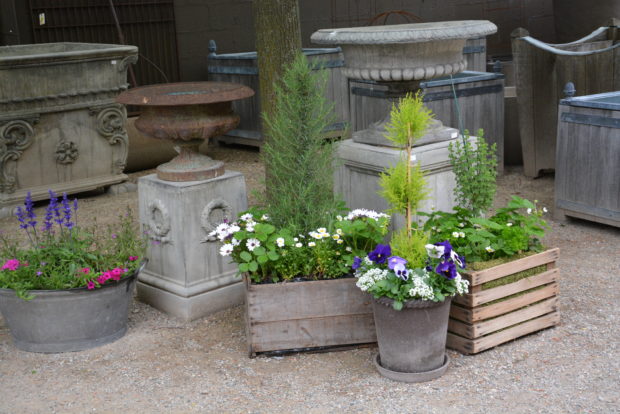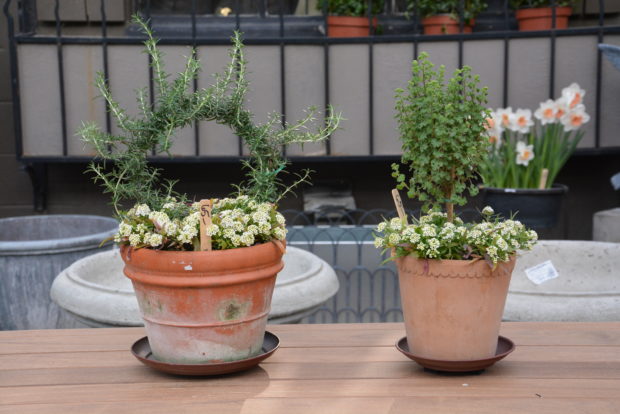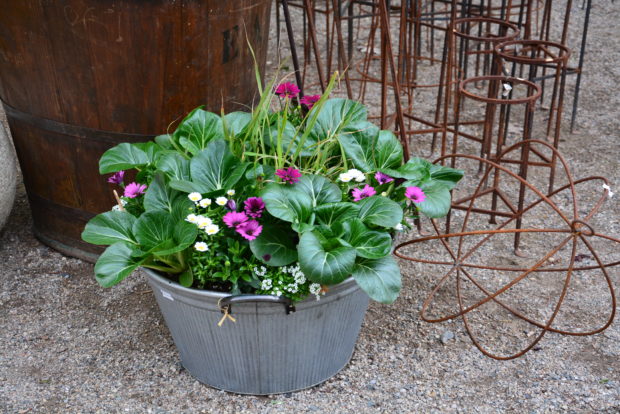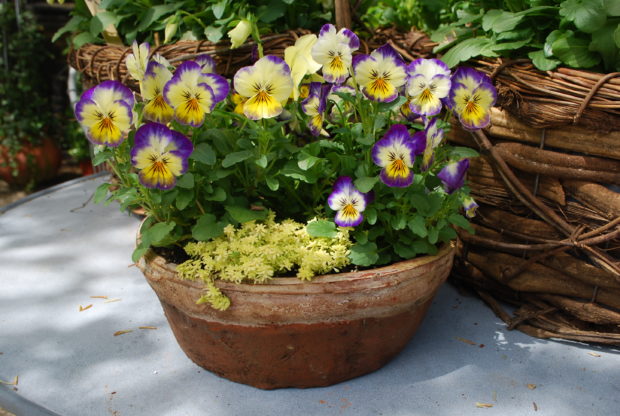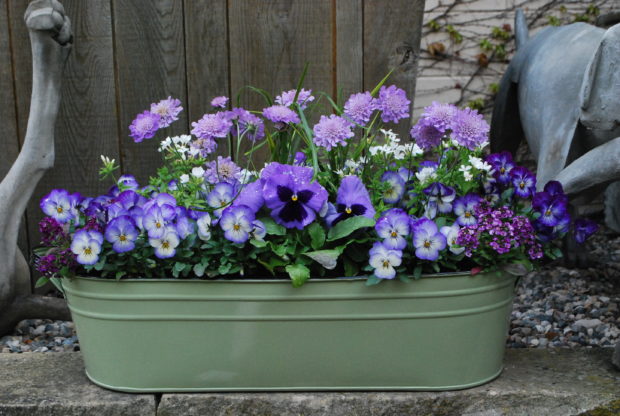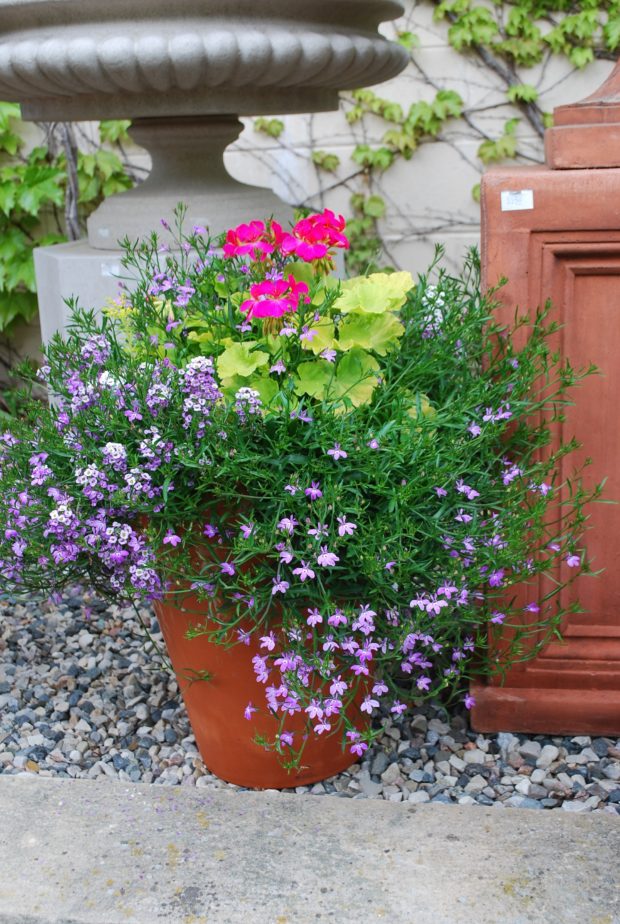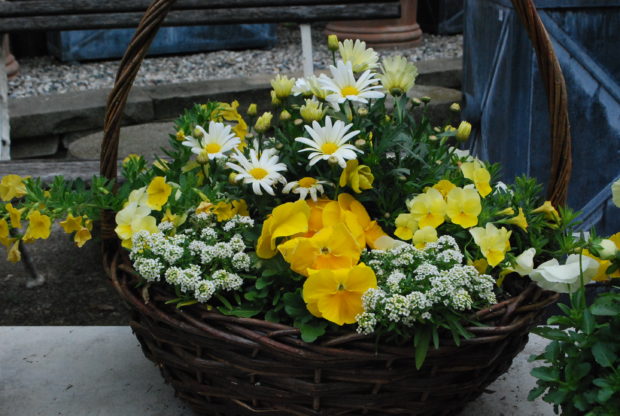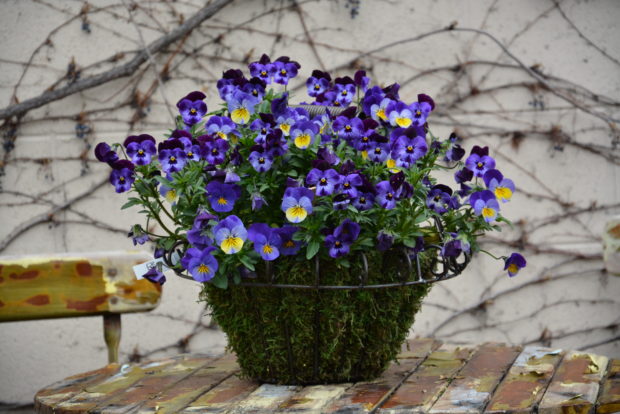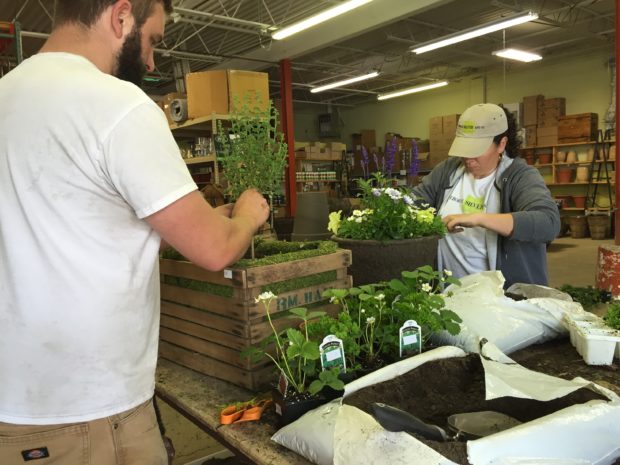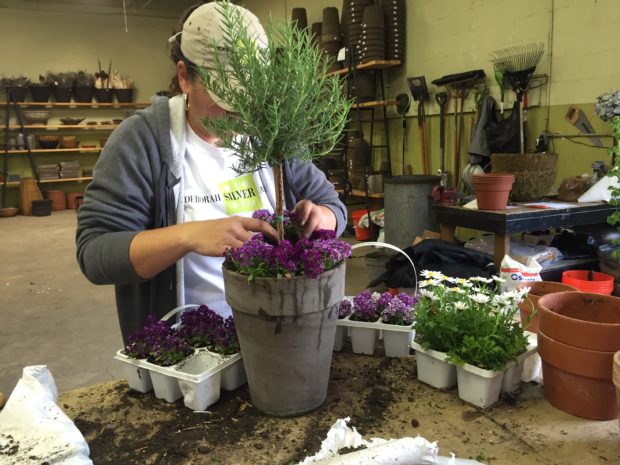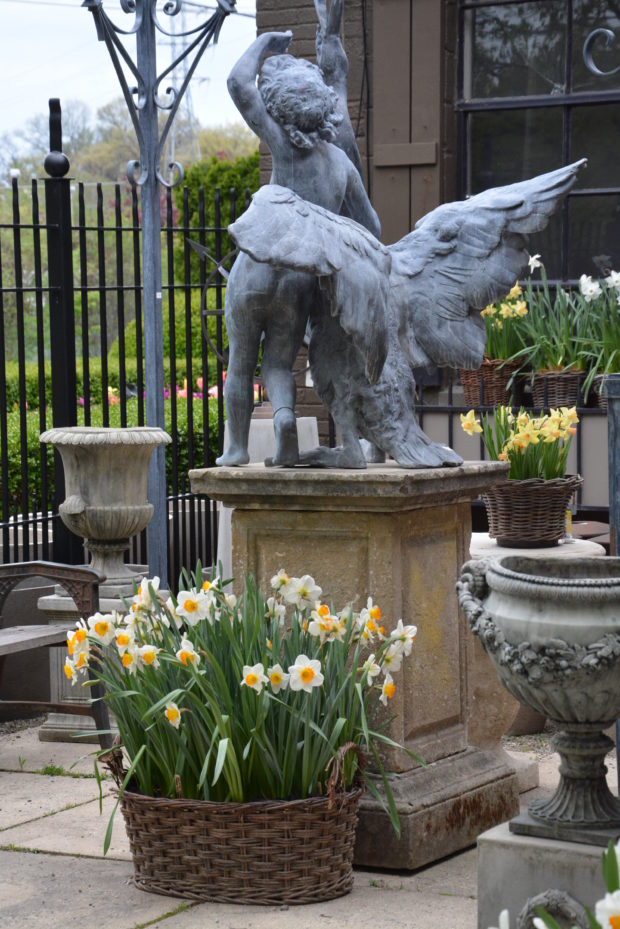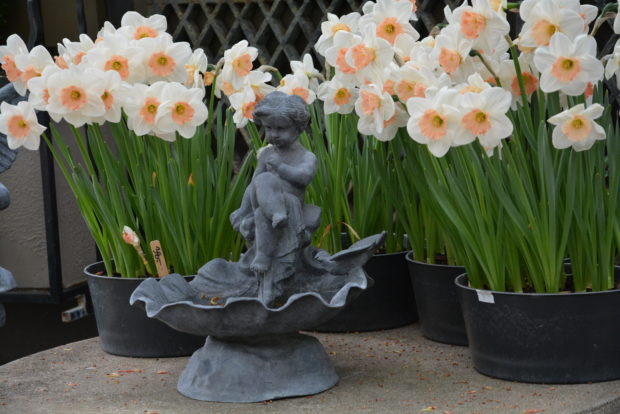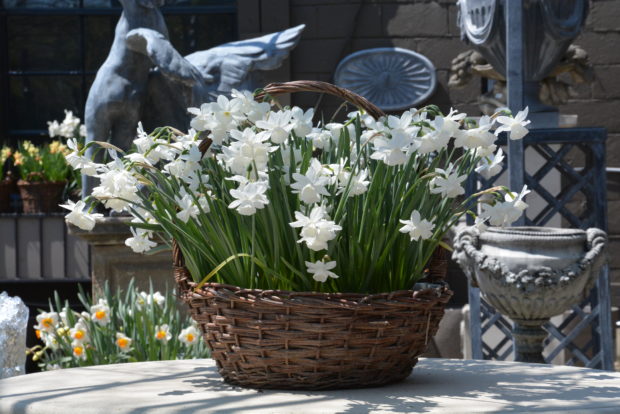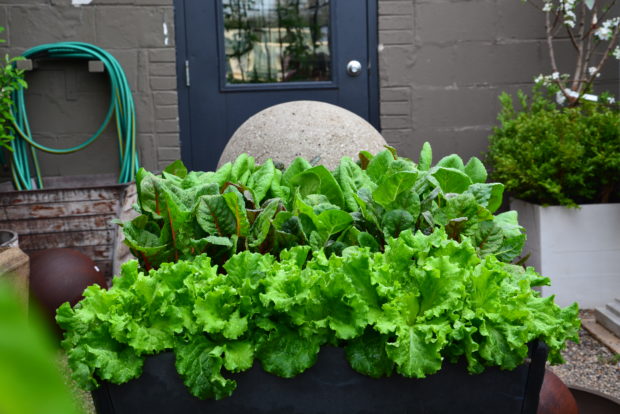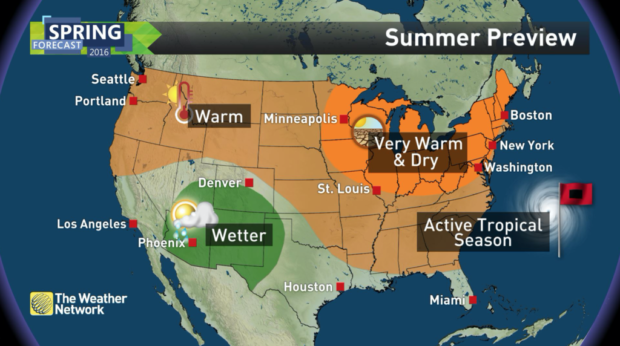 Choosing plants for summer containers can be complicated, especially if you are as serious about them as I am. I have to be serious, as I plant them professionally for a wide range of clients. But lacking any clients, I would still be serious about them. They are seasonal expressions of the landscape confined by a finite world known as a container. The idea of this enchants me. A great container planting is a condensed expression of color, mass, line, texture, mass, shape and mood. Like the best chocolate mousse you ever ate. The thoughtful landscape and garden builds and endures and reinvents itself from year to year. Like a great stew. Seasonal containers provide an opportunity to express an idea or point of view that needs no more commitment than one season. If this year’s annual containers do not satisfy, the next summer season is not so far away. Landscape design and installation can be a lengthy affair. The road to maturity is long, and not always easy. The death of a tree is momentous; a petunia lost is no cause for alarm. That container plantings last for one season is such a blessing. As much as I embrace the tough and long road designing and implementing a landscape, I value those gestures that are quick and true. I design containers by instinct. Every season, a plant that interests me, or a group of plants that seem like they will create a neighborhood gets my attention. But long before I shop, I scout the long range weather forecast for my zone.
Choosing plants for summer containers can be complicated, especially if you are as serious about them as I am. I have to be serious, as I plant them professionally for a wide range of clients. But lacking any clients, I would still be serious about them. They are seasonal expressions of the landscape confined by a finite world known as a container. The idea of this enchants me. A great container planting is a condensed expression of color, mass, line, texture, mass, shape and mood. Like the best chocolate mousse you ever ate. The thoughtful landscape and garden builds and endures and reinvents itself from year to year. Like a great stew. Seasonal containers provide an opportunity to express an idea or point of view that needs no more commitment than one season. If this year’s annual containers do not satisfy, the next summer season is not so far away. Landscape design and installation can be a lengthy affair. The road to maturity is long, and not always easy. The death of a tree is momentous; a petunia lost is no cause for alarm. That container plantings last for one season is such a blessing. As much as I embrace the tough and long road designing and implementing a landscape, I value those gestures that are quick and true. I design containers by instinct. Every season, a plant that interests me, or a group of plants that seem like they will create a neighborhood gets my attention. But long before I shop, I scout the long range weather forecast for my zone.
 A forecast for much above average temperatures, and dry conditions means I started paying special attention to those seasonal plants that will thrive in those conditions months ago. I have always been a fan of those old fashioned cutting flowers-the zinnias. If we have a rainy or very humid summer, they are a magnet for mildew and all manner of fungal disease. Reading the forecast in March, I started researching zinnias. A dry hot summer would be the perfect moment to plant lots of them in front of the shop. I was especially interested in unusual forms, vigor, resistance to disease, and and that old fashioned charm they are known for. In reading about zinnias, I came across a blog post from Floret Farms. They grow armload after armload of the most beautiful cut flowers I have ever seen-just like the cut zinnias you see in their picture above. I did take some of their recommendations to heart. Interested in the article? http://www.floretflowers.com/2014/03/flower-focus-growing-great-zinnias/
A forecast for much above average temperatures, and dry conditions means I started paying special attention to those seasonal plants that will thrive in those conditions months ago. I have always been a fan of those old fashioned cutting flowers-the zinnias. If we have a rainy or very humid summer, they are a magnet for mildew and all manner of fungal disease. Reading the forecast in March, I started researching zinnias. A dry hot summer would be the perfect moment to plant lots of them in front of the shop. I was especially interested in unusual forms, vigor, resistance to disease, and and that old fashioned charm they are known for. In reading about zinnias, I came across a blog post from Floret Farms. They grow armload after armload of the most beautiful cut flowers I have ever seen-just like the cut zinnias you see in their picture above. I did take some of their recommendations to heart. Interested in the article? http://www.floretflowers.com/2014/03/flower-focus-growing-great-zinnias/
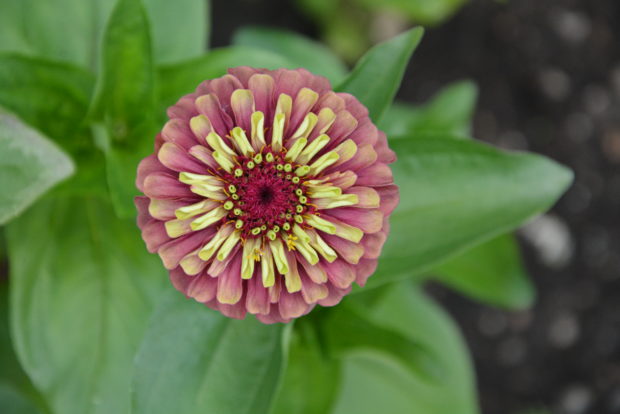 Zinnia Queen red lime has very unusual and muted coloration-unlike many of the varieties that feature intense color.
Zinnia Queen red lime has very unusual and muted coloration-unlike many of the varieties that feature intense color.
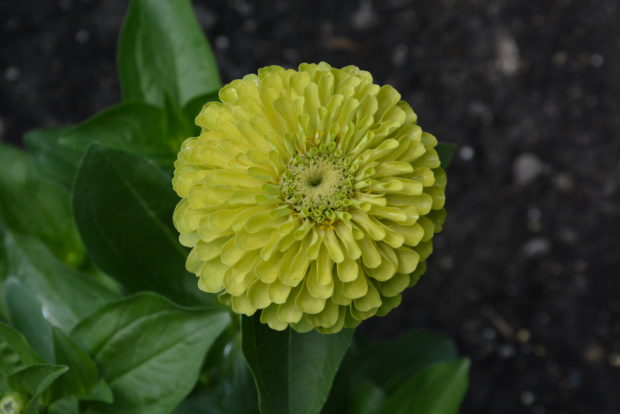 It’s sister cultivar, Queen Lime, is a much improved version of the old lime green zinnia “Envy”.
It’s sister cultivar, Queen Lime, is a much improved version of the old lime green zinnia “Envy”.
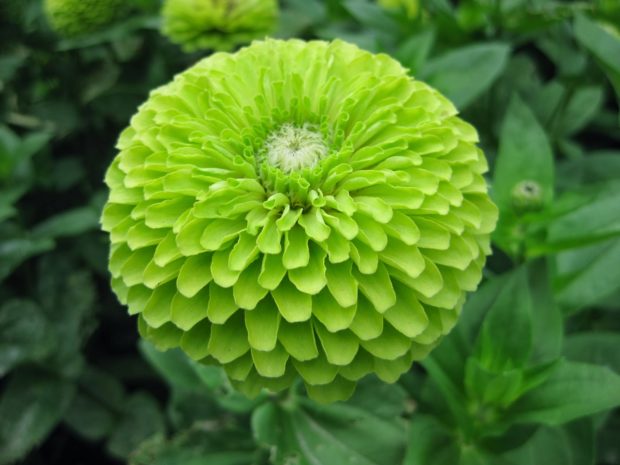 Benary Lime tends towards the greener side of lime. From the Johnny’s Selected seeds website: A classic and superior strain of zinnia originating from a historic German seed company, the Benary’s Giant Series features large, double blossoms of approximately 4–5″ in diameter, in multiple magnificent colors. Recommended by the Association of Specialty Cut Flower Growers for their vigor, uniformity, productivity, and carefree cultivation across a range of growing zones and conditions. From Swallowtail Garden Seeds: The 3-4 inch, double chartreuse flowers are superb for cutting, blend with almost any color. Outstanding massed in the landscape; the flowers are jaw-dropping in mixed bouquets. Plants are rain, heat, and mildew resistant. Somewhat shorter than others in this series, growing 24-26 inches tall.
Benary Lime tends towards the greener side of lime. From the Johnny’s Selected seeds website: A classic and superior strain of zinnia originating from a historic German seed company, the Benary’s Giant Series features large, double blossoms of approximately 4–5″ in diameter, in multiple magnificent colors. Recommended by the Association of Specialty Cut Flower Growers for their vigor, uniformity, productivity, and carefree cultivation across a range of growing zones and conditions. From Swallowtail Garden Seeds: The 3-4 inch, double chartreuse flowers are superb for cutting, blend with almost any color. Outstanding massed in the landscape; the flowers are jaw-dropping in mixed bouquets. Plants are rain, heat, and mildew resistant. Somewhat shorter than others in this series, growing 24-26 inches tall.
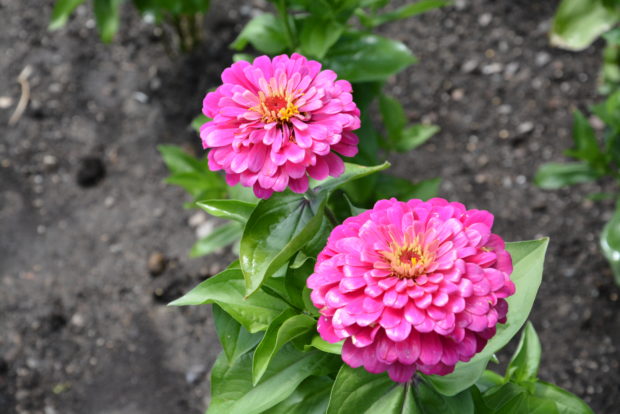 I first read about this zinnia at Floret Farms. Uproar Rose is a hot pink zinnia that is reputed to produce flower heads at 5″-6″ across all summer. It makes an excellent cut flower, and is resistant to fungal diseases. Floret favors this zinnia, as it has lots of side branching – meaning it will bear lots of flowers. I added this zinnia to my collection.
I first read about this zinnia at Floret Farms. Uproar Rose is a hot pink zinnia that is reputed to produce flower heads at 5″-6″ across all summer. It makes an excellent cut flower, and is resistant to fungal diseases. Floret favors this zinnia, as it has lots of side branching – meaning it will bear lots of flowers. I added this zinnia to my collection.
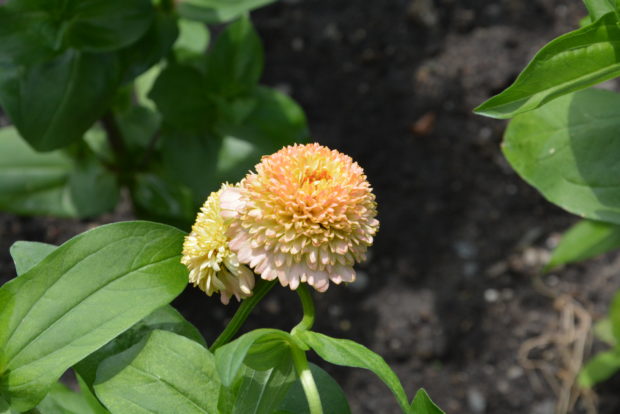 The Zinderella series, in both peach and lilac represent a very unusual anemone type form. I see not every flower on the stalk is quite as double as the ones in my pictures, but that is not enough to discourage me from growing them. They grow about 24 inches tall. I mixed all of the sizes and colors of zinnias for a loose look, and I have twice as many lime zinnias as all of the other colors. That lime will make it so much easier to appreciate the color and shape of the other varieties.
The Zinderella series, in both peach and lilac represent a very unusual anemone type form. I see not every flower on the stalk is quite as double as the ones in my pictures, but that is not enough to discourage me from growing them. They grow about 24 inches tall. I mixed all of the sizes and colors of zinnias for a loose look, and I have twice as many lime zinnias as all of the other colors. That lime will make it so much easier to appreciate the color and shape of the other varieties.
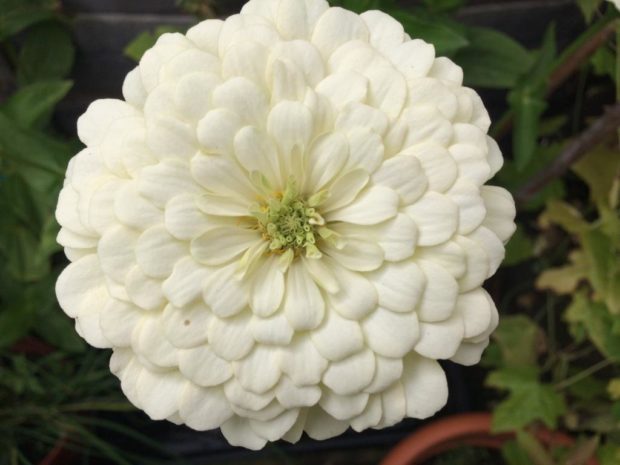 A little splash of white is the perfect accent for a garden with lots of bright color. This is the tallest of my zinnias, topping out at 40″. Polar Bear white is an appropriate name. It cools off the collection.
A little splash of white is the perfect accent for a garden with lots of bright color. This is the tallest of my zinnias, topping out at 40″. Polar Bear white is an appropriate name. It cools off the collection.
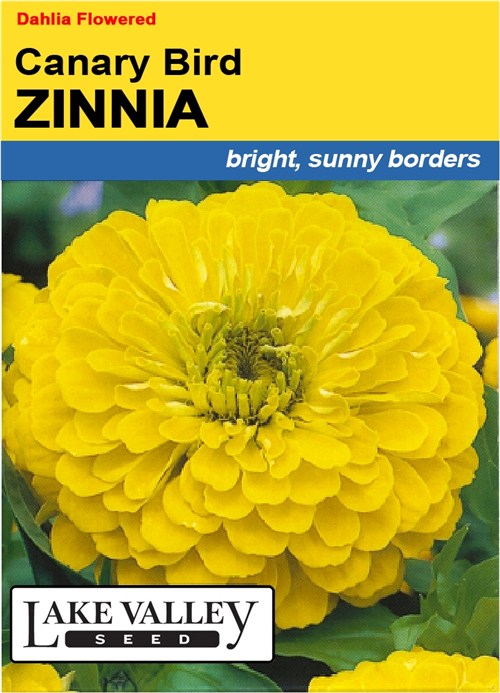 Zinnia Canary Bird rounded out the tall zinnia group.
Zinnia Canary Bird rounded out the tall zinnia group.
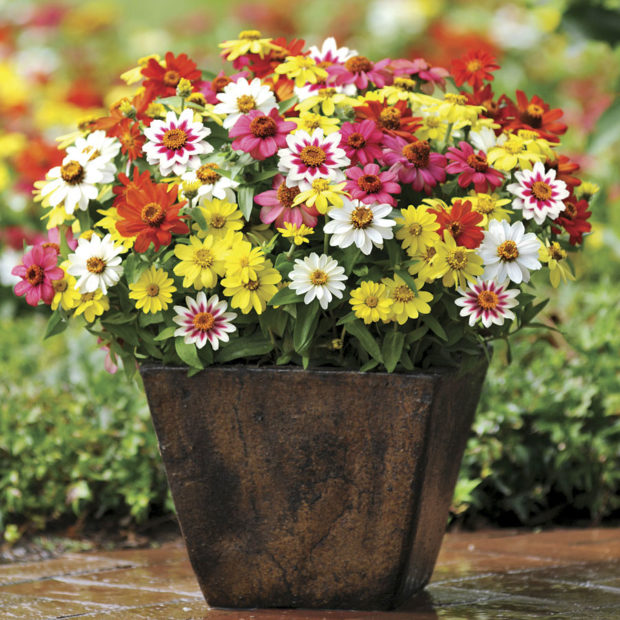 I did not want to neglect the shorter and more compact zinnias. I did opt to grow the Zahara series. From Park Seed: The Zahara series introduced in 2009 immediately became famous for its resistance to mildew and leaf spot, its nonstop blooms, and its larger flower size.These blooms are fully 2½ inches wide. Renowned for its ability to withstand heat, humidity, drought, and just about anything else, Zahara is the first bedding Zinnia that can truly claim to be disease-resistant. Mildew is a traditional enemy of the Zinnia, but Zahara’s got it licked!
I did not want to neglect the shorter and more compact zinnias. I did opt to grow the Zahara series. From Park Seed: The Zahara series introduced in 2009 immediately became famous for its resistance to mildew and leaf spot, its nonstop blooms, and its larger flower size.These blooms are fully 2½ inches wide. Renowned for its ability to withstand heat, humidity, drought, and just about anything else, Zahara is the first bedding Zinnia that can truly claim to be disease-resistant. Mildew is a traditional enemy of the Zinnia, but Zahara’s got it licked!
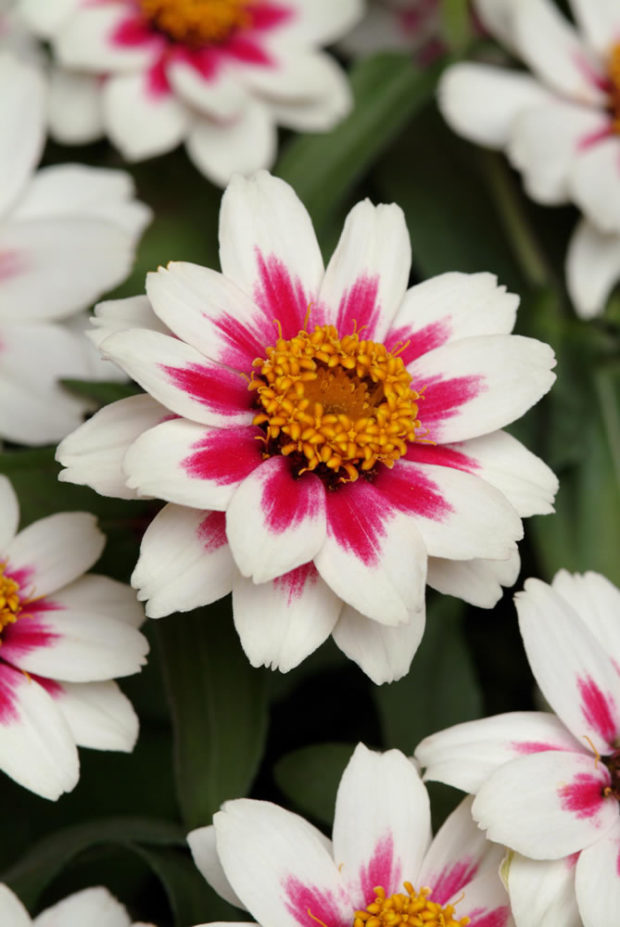 Zahara Starlight White is especially beautiful.
Zahara Starlight White is especially beautiful.
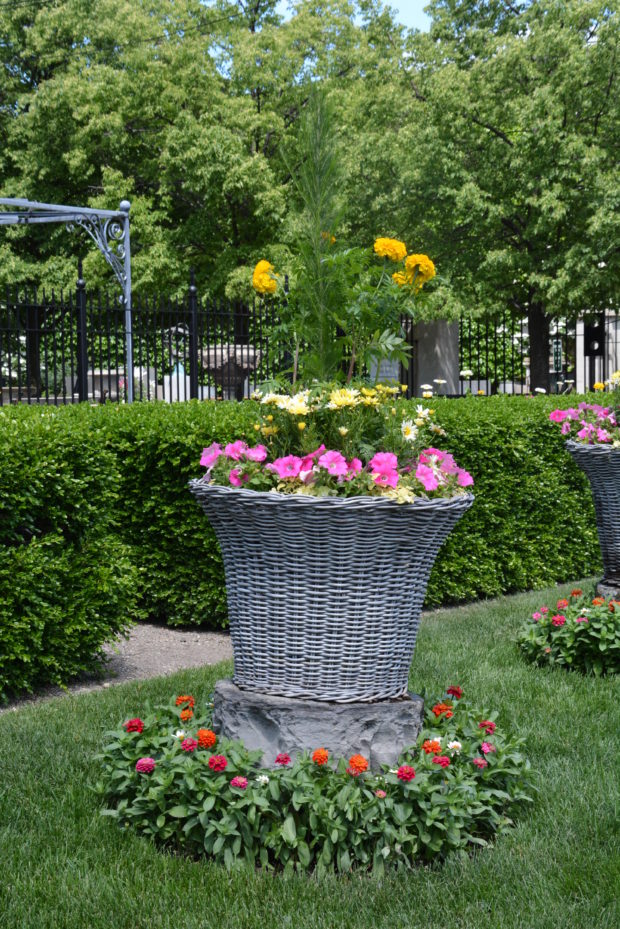 The wicker pots out front are planted with elegant feather, tall yellow marigolds, marguerite daisies, pink petunias and lime licorice. We dug around the stone plinth, and planted Zahara zinnias.
The wicker pots out front are planted with elegant feather, tall yellow marigolds, marguerite daisies, pink petunias and lime licorice. We dug around the stone plinth, and planted Zahara zinnias.
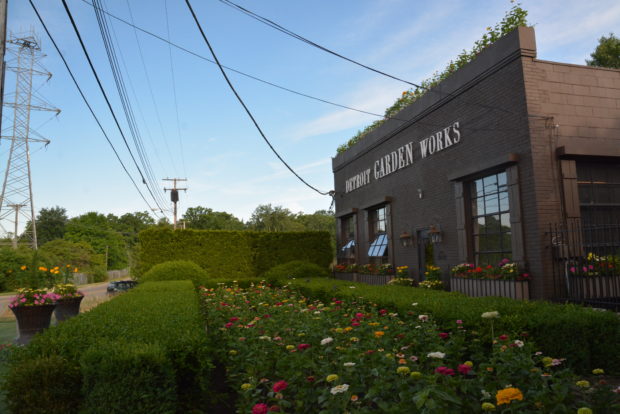 Yes, I planted them on the roof too. We’ll see how we do with them.
Yes, I planted them on the roof too. We’ll see how we do with them.

